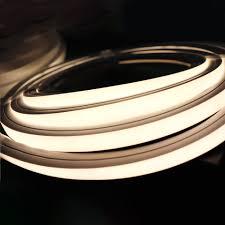Heat Resistant LED Lights Market Overview Reveals Rising Industrial Demand Worldwide

The heat resistant LED lights market is evolving rapidly as various industries seek durable, high-performance lighting solutions that can withstand elevated temperatures, harsh environments, and long operating hours. This overview outlines the current state of the market, the growing demand for thermally resilient lighting technologies, and the emerging opportunities in global regions.
1. Introduction to Heat Resistant LED Lights
Heat resistant LED lights are designed to operate efficiently in environments where high ambient or surface temperatures may affect conventional lighting systems. Unlike traditional incandescent or fluorescent lamps, which tend to degrade or fail under extreme conditions, these LEDs are manufactured with specialized materials, advanced thermal management systems, and rugged housings to ensure optimal performance even above 100°C.
Industries such as oil & gas, mining, metallurgy, transportation, and heavy manufacturing rely heavily on heat resistant lighting to maintain operational efficiency and safety standards. Additionally, the rise in infrastructure development projects in urban and rural areas has further fueled the need for reliable and heat-tolerant lighting systems.
2. Key Components and Technology
The core technology behind heat resistant LED lights includes:
-
Advanced Heat Sink Designs: Made from aluminum alloys, copper, or graphene to dissipate heat effectively.
-
Thermal Interface Materials (TIMs): These enhance heat transfer from the LED chip to the heat sink.
-
High-Temperature LED Chips: Manufactured using robust semiconductor materials like silicon carbide (SiC) and aluminum nitride (AlN).
-
Protective Coatings: Help shield internal components from heat, humidity, and corrosive substances.
The integration of these elements ensures the light source maintains brightness, efficiency, and longevity under extreme conditions.
3. Applications Across Industries
Industrial Manufacturing: Foundries, glass factories, and steel plants require lighting solutions that perform in extremely hot environments.
Oil & Gas Sector: LEDs are used in offshore rigs, refineries, and processing plants, where flammable gases and high ambient heat coexist.
Automotive and Aerospace: LEDs are increasingly used in components close to engines or exhaust systems, where temperature tolerance is critical.
Tunnel and Infrastructure Lighting: Heat resistant LEDs are ideal for enclosed environments with poor ventilation and continuous operation.
Data Centers and Telecom: These facilities require reliable lighting for areas with limited airflow or heat-sensitive equipment.
4. Market Segmentation
By Product Type:
-
Floodlights
-
High bay and low bay fixtures
-
Tube lights and linear strips
-
Panel lights
-
Portable and explosion-proof lights
By Installation:
-
New installations
-
Retrofits and upgrades
By End-Use Industry:
-
Manufacturing
-
Oil & gas
-
Transportation
-
Utilities
-
Commercial buildings
-
Military and defense
This segmentation allows suppliers and manufacturers to customize products based on specific performance, temperature, and regulatory needs.
5. Regional Insights
North America:
The U.S. and Canada are key markets due to stringent industrial safety norms, energy efficiency initiatives, and widespread use of automation in manufacturing. Retrofitting old systems with heat-resistant LEDs is also contributing to market expansion.
Europe:
Strong demand is observed in Germany, France, and the UK, supported by robust industrial infrastructure and EU regulations mandating energy-efficient and environmentally friendly lighting.
Asia-Pacific:
China, India, and Southeast Asia represent the fastest-growing markets. Rapid industrialization, infrastructure development, and government investments in energy-efficient lighting programs are driving adoption.
Middle East and Africa:
These regions experience high ambient temperatures and possess expansive oil & gas infrastructure, creating high demand for thermally stable lighting systems.
6. Market Drivers
-
Increasing Need for Reliable Lighting in Extreme Conditions
-
Global Push Toward Energy Efficiency and Lower Carbon Emissions
-
Rising Investment in Smart Cities and Infrastructure Projects
-
Enhanced Product Lifespan Reducing Maintenance Costs
-
Regulatory Compliance with Safety and Efficiency Standards
Together, these drivers are shaping the future growth and direction of the market globally.
7. Competitive Landscape
Key companies operating in the heat resistant LED lights market include:
-
Signify (Philips) – Offers industrial-grade LED systems with smart controls.
-
Cree LED – Focuses on thermally efficient, high-brightness LED chips.
-
GE Current – Supplies lighting solutions for manufacturing and transportation.
-
Dialight – Specializes in hazardous location lighting and explosion-proof LEDs.
-
Osram – Known for high-performance automotive and industrial lighting solutions.
These players are investing heavily in R&D, thermal management technologies, and strategic partnerships to strengthen their global presence.
Conclusion
The heat resistant LED lights market is experiencing robust growth as industrial sectors prioritize safety, energy efficiency, and operational continuity in extreme environments. With technological innovations and expanding infrastructure projects across the globe, the market is poised for continued expansion. Manufacturers focusing on high-performance design, smart integration, and regulatory compliance are well-positioned to capitalize on emerging opportunities in this evolving sector.
- Art
- Causes
- Crafts
- Dance
- Drinks
- Film
- Fitness
- Food
- Игры
- Gardening
- Health
- Главная
- Literature
- Music
- Networking
- Другое
- Party
- Religion
- Shopping
- Sports
- Theater
- Wellness


